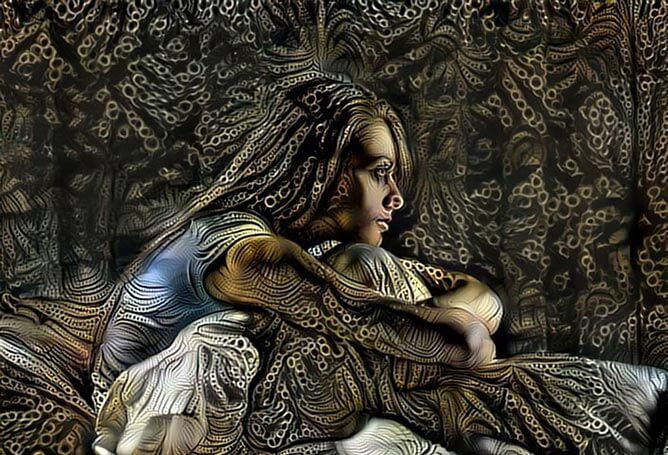
Do strange images of geometric shapes, people or animals appear out of nowhere as you lie in bed at night? Perhaps you’ve heard voices or noises which can’t possibly be real?
If so, it could be that you’ve experienced what’s known as sleep hallucinations.
Despite leading to the occasional leap out of bed in sheer terror, they are usually harmless. And many people experience them at some point in their lives – including me.
My nocturnal flying geometric manifestations
As a child, multicolored geometric shapes would regularly swoop across my bedroom, just as I was drifting off to sleep. I remember simultaneously marveling at them and wishing them away so I could sleep in peace.
It doesn’t happen so often nowadays, but once in a while, I’m still prone to my mathematical manifestations.
Perhaps I should be grateful for my geeky hallucinations – especially compared to the disturbing experiences some people have.
What are sleep hallucinations?
Sleep hallucinations are imaginary experiences that happen during the transition between being awake and asleep, and can feel confusingly real.
They are also referred to as hypnagogic hallucinations if they occur while you’re falling asleep, or hypnopompic hallucinations if they happen while waking up.
The hallucinations are usually visual, such as seeing shapes or figures in the dark. But they can also involve your other senses.
The hallucinations can be vivid and frightening in some cases. If you see a giant creature in your room or hear a scary voice, it’s understandable that some people will jump out of bed and turn the light on to check what’s going on!
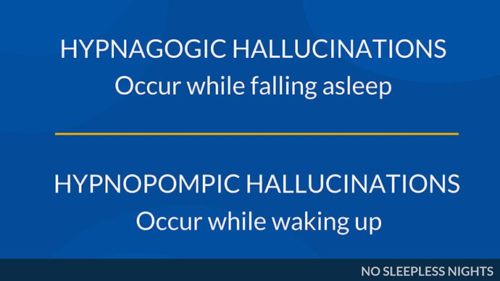
How many people have sleep hallucinations?
A commonly quoted statistic in medical articles comes from research conducted in 1996. The team interviewed 4972 people in the United Kingdom by telephone. They found that 37% had experienced hypnagogic hallucinations. And 12.5% had experienced hypnopompic hallucinations.
In 2000, another team of researchers surveyed 13,057 people and found that 38.7% had experienced hallucinations at some point during the day or night. 24.8% of the sample had experienced hallucinations at sleep onset, and 6.6% upon waking.
A sign of Narcolepsy
For some people, sleep hallucinations can be a sign of narcolepsy. Narcolepsy is a sleep disorder which involves sudden daytime episodes of:
- Unexpectedly falling asleep
- Sleep paralysis
- Hypnagogic hallucinations
If you have these symptoms, it’s important to seek medical advice.
Symptoms
The main symptom is seeing or hearing things while falling asleep or waking up that aren’t real.
Researchers believe that the most common type of hallucination is visual. However, it’s possible to experience hallucinations that correspond to any of your senses:
- Visual – such as geometric patterns, shapes or light flashing. Sometimes complex forms like animals or people.
- Auditory – voices talking, phone or doorbell ringing, music, hissing, humming or whistling.
- Olfactory – pleasant or unpleasant smells.
- Tactile – insects crawling on the skin, rubbing, stroking, tapping or tickling sensations. Perhaps also feeling weightless, distortions in the body, flying.
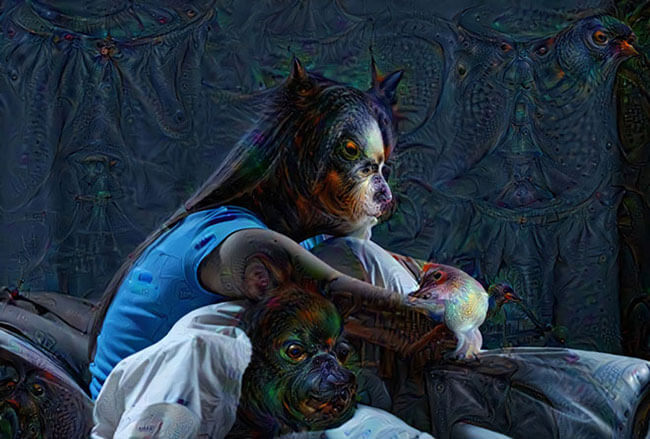
Not the same as nightmares
Telling the difference between dreaming and hallucinating isn’t always obvious in the moment. But sleep hallucinations are not the same as nightmares.
When you wake up from a nightmare, you’ll know you were asleep (even if it takes a little while to come back to reality).
Sleep hallucinations, however, can feel like they are really happening. You know you’re awake, but you’re not convinced it’s merely your imagination playing tricks on you.
Coexisting with sleep paralysis
Sleep hallucinations sometimes happen during an episode of sleep paralysis.
During sleep paralysis, you might be unable to move your body in bed, which in itself is often frightening.
The hallucinations that accompany it can range from seeing a presence in the room to seeing and feeling a creature sitting on you.
Causes
The International Classification of Sleep Disorders manual suggests two causes related to brain function, though also states that more research is needed:
- An intrusion of dream imagery onto wakefulness.
- A lack of stimulus leading to the visual cortex in the brain creating images.
Health websites, such as healthline.com, suggest that sleep hallucinations can be caused by other conditions, such as:
- Sleep disorders like narcolepsy or sleep paralysis
- A medical condition or medication use
- A mental health disorder, such as schizophrenia
- Substance abuse
Risk factors
According to the American Academy of Sleep Medicine, they are more common in children and young adults. Women might experience them slightly more often than men.
Some factors are thought to increase the likelihood or severity of the hallucinations, including:
- Drug or alcohol use
- Anxiety or stress
- Mood disorders like bipolar disorder or depression
- Insomnia
- Epileptic seizures
Research shows that fragmented sleep is associated with more hallucinations
In 2021, a team of researchers published an interesting study of sleep hallucinations (you can read it in full on nature.com).
Based on an online survey of 10,299 people, they found that poor sleep is associated with the occurrence of hallucinations – a point already confirmed by previous studies.
However, they further showed that fragmented sleep, i.e. regular wakings, is related to hallucinations. And that fragmented sleep is also related to the content, frequency, duration, and associated distress.
Interestingly then, people who had better sleep had less negative and less disruptive hallucinations when they did have them.
So the more you have them, the worse they might be. It seems to me to be a good motivation to tackle any factors you know that make you wake up more often in the night.
Treatment
Do you need to see a doctor?
If you’re experiencing anxiety or losing sleep because of regular sleep hallucinations, it’s a good idea to speak to a doctor or sleep specialist.
They would ask you about your hallucinations and look at your medical history and other factors like medication and lifestyle. They might decide that an overnight sleep study is needed to find out more.
They would also look at the possibility of another condition causing the episodes. And if they find one, give you the appropriate treatment.
Worried about your mental health?
If you suddenly start having hallucinations, it’s understandable that you might question your mental health. This is a point I’ve seen raised in the comments below many times, so you wouldn’t be alone in thinking something was ‘wrong’ with you.
It’s worth noting that if it only ever happens when you’re in bed trying to sleep, there’s a good chance it’s harmless sleep hallucinations. Perhaps it’s a sign you’re under a lot of stress lately, for example, but it might not be an indicator that something is wrong beyond that.
Having said that, if you have hallucinations during the day, or other symptoms that are making you feel anxious or confused about your mental health, then it’s a good idea to talk to your doctor. And if you’re still not convinced the nighttime hallucinations are benign, talk to your doctor to get a professional opinion.
If this line of thinking feels relevant to you, there’s a good article on psychologytoday.com in which a clinical psychologist talks a patient having sleep problems rather than a schizophrenic illness.
What can you do to help reduce them?
Here are some ideas which might help keep the hallucinations at bay:
- Get an adequate amount of sleep every night. Try to stick to a regular sleep schedule and don’t allow yourself to become sleep deprived.
- Avoid recreational drugs.
- Eat a healthy diet and drink plenty of water.
- Try to reduce your stress levels.
- Try using a soft night light in the bedroom. This might help fill the space that your brain uses as a blank canvas.
- If you tend to have auditory hallucinations, listening to music, radio or a podcast in bed might help.
- If you find yourself focusing on visual hallucinations, try to re-focus your mind on something else. Breathing exercises or muscle relaxation can keep your brain occupied.
- If it’s overwhelming, turn on a light and get up for a while, do an activity you find relaxing, and then try to sleep again after 10-15 minutes.
- Several readers have said in the comments below that wearing a sleep mask helps them.
Hypnagogic and hypnopompic hallucinations are a normal part of life for many people. Once you’ve ruled out any serious illness or disorder, you’re left to deal with the experience in two ways.
First, try to adapt your lifestyle to make sure you do everything possible to sleep well. Second, relax and try not to worry about things that go bump in the night.
Your thoughts
Do you ever experience hallucinations when falling asleep or waking up? What form do they take?
Feel free to describe your experience in the comments below and share any ideas you have about dealing with them.

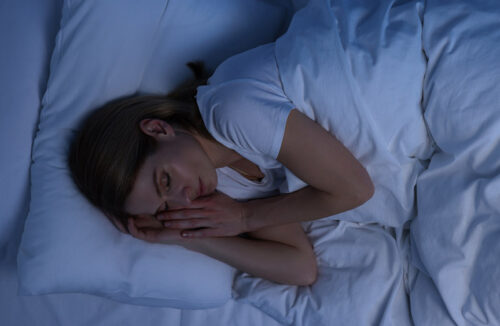
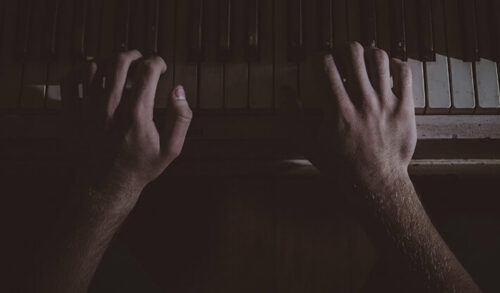

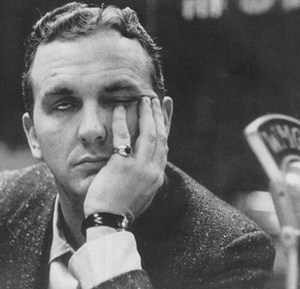
Before laying down to go to sleep I saw what looked like a holograph of an old man with stringy white long hair. He was moving his hand side to side as if he was working over something. The whole image flickered then it disappeared. He didn’t look happy and it looked like he was hot and having to work. He looked tired. His hair looked like he hadn’t combed it ever. He was a white male. I’ve seen people before that I know are dead as human looking as you or I that have disappeared. But nothing like this holograph or projection.